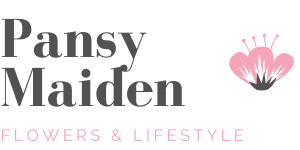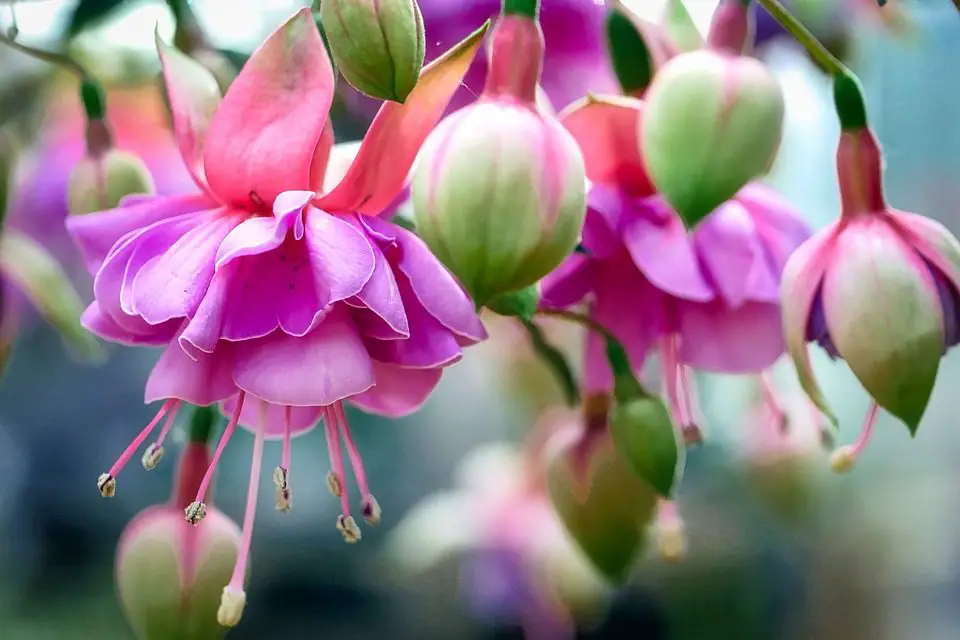
Last updated on May 20th, 2023 at 11:11 pm
Fuchsia, also known as lady’s eardrop, is a flowering plant species belonging to the family Onagraceae or evening primrose or willowherb.
Most fuchsia varieties are native to Central and South America, but some are also found in Zealand and the Island of Tahiti in French Polynesia. Fuchsias have been hybridized greatly, and now more than three thousand varieties make identification and selection an overwhelming task.
This pretty flowering plant variety was introduced to Britain in 1788. Botanically, Charles Plumier, a French minim monk, discovered this plant in the Caribbean Islands of Tahiti and the Dominican Republic in 1695. He named the genus Fuchsia after the German botanist and physician Leonhart Fuchs. Its scientific name is Fuchsia triphylla.
Fuchsia species have existed for millions of years. It is closely related to the Circaea genus, the enchanter’s nightshade. This species is believed to be connected to enchantress Circe and her magic in Greek mythology. However, the two species were separated about 41 million years ago.
Although the first varieties of fuchsias entered Europe in the late 1780s, they were popularized in the 1820s. By the 1840s, several breeders were cultivating several varieties of this flowering plant imported from Meso- and South America. Breeders in England, Germany, France, and Belgium started publicizing their stocks through litho-printed pamphlets and botanical illustrations.
Fuchsia flowers got further recognition and became more popular with French painter Claude Monet’s famous painting, Camille at the Window, Argenteuil.
Fuchsias were a source of inspiration for Monet as he painted his wife standing, framed by colorful fuchsias arranged artfully. His bold strokes and vivid choice of colors increased the aesthetic appeal of fuchsias and made them better known among enthusiastic gardeners.
What does the Fuchsia flower symbolize?

Fuchsia flower meanings and symbolism differ in different cultures.
In western Ireland, these pretty flowers are called ‘Deora De,’ meaning God’s Teardrops. The name’s significance may be connected to the flower’s drooping bell-shaped appearance.
Fuchsias grow in abundance in Ireland. The flower has a fun side to it. Children often gently pop open the inflated buds to reveal the colorful petals. A popular amusement with the flower involves making pin-head ballerina dolls by removing the stigma and six of the eight stamens. The nectar of the flowers is also often sucked by popping the head open.
The Fuchsia flower is closely connected to elegance and good taste due to its pretty flowers that look like a ballerina in a skit. These blooms also symbolize confiding love, confidence in a person, friendship, and amiability.
During the Tynwald Day (Manx Day) celebrations in The Isle of Man on July 5, the preferred floral emblem is the Fuchsia flower.
Throughout history, fuchsia flowers have represented a myriad of sentiments. Deep love, healing, grace, and trust, were some connotations of this flower in the Victorian flower language.
Fuchsia’s cheerful, vibrant, playful look is a mood enhancer and can be quite uplifting. The flower is also named a purplish-red color that represents liveliness, uniqueness, maturity, and self-assurance. The warm, eye-catching color is connected to confidence and commands attention.
Fuchsia flowers also have a healing touch. Fuchsia essence is said to help accept long-repressed emotions, grief, pain, and suffering. The flowery remedy is believed to clear emotional blockages.
Fuchsia flowers are also linked to certain myths. It is believed that in ancient times in some cultures, this flower was sent as a warning sign for others. Flowers were also left in front of houses as a form of protection. As some folktales go, fuchsia flowers could be turned into fairies or beautiful women.
All in all, the fuchsia flower symbolic meanings are:
- cheerful
- playful
- uplifting
- deep love
- grace
- trust
- healing
Meaning of the Fuchsia flower colors
Red color
Shades of red represent a wide range of feelings and emotions. But mostly, red is connected to passion and love. Like most flowers, red fuchsia stands for love, passion, and confidence in someone.

Pink color
Pink fuchsia is associated with femininity, kindness, playfulness, and sweetness.
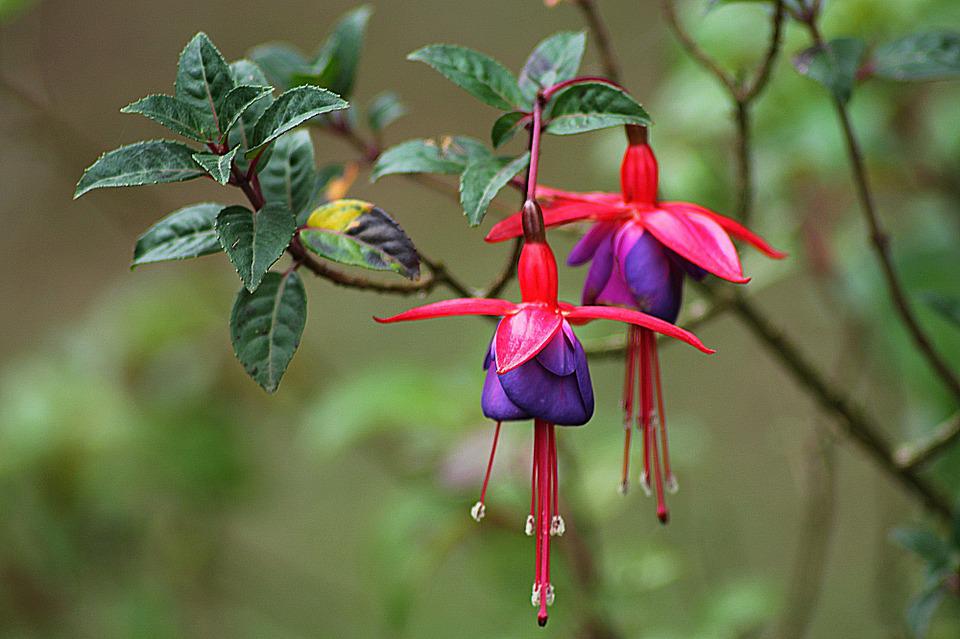
Purple color
Purple fuchsias usually bloom in a dark purple shade representing royalty, success, luxury, wealth, and elegance. Apart from its flamboyant side, purple fuchsia also represents thoughtfulness.
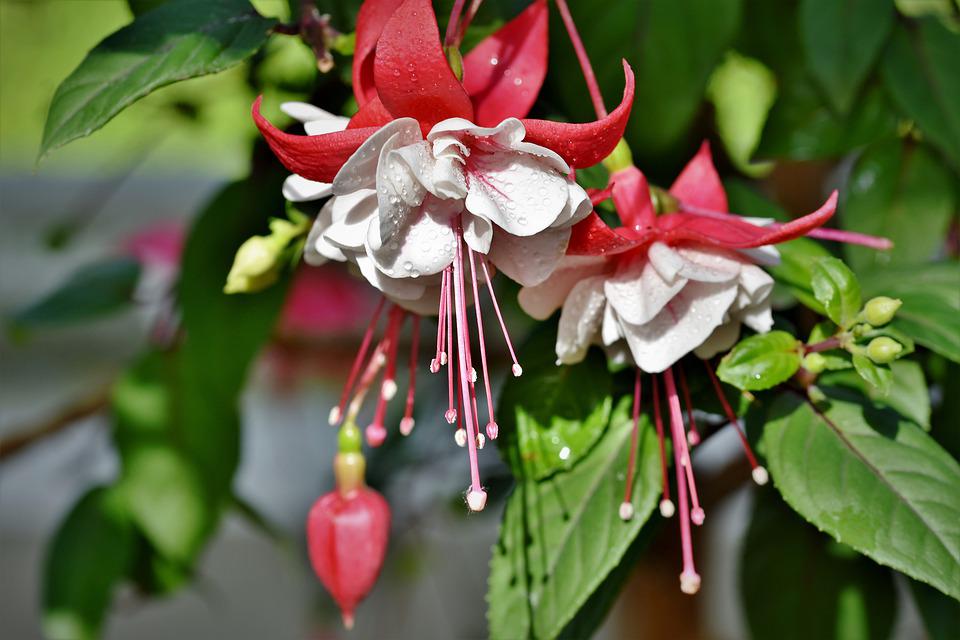
White color
White is a delicate color. It stands for purity, sympathy, honesty, innocence, and new beginnings. White fuchsias also represent all these emotions. However, there are very few varieties of fuchsia plants that bear completely white flowers. Hawkshead, White King, and White Joy are some of the pure white flowering varieties.
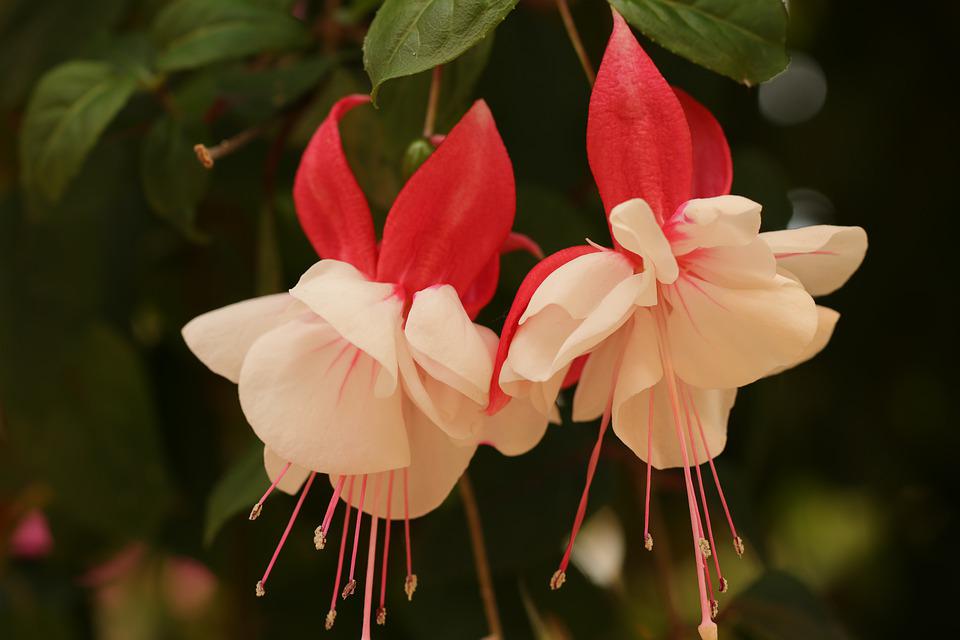
Orange color
Bold and bright orange fuchsias are associated with excitement, success, joy, encouragement, determination, health, stimulation, balance, sexuality, and fascination.
Interesting facts about the Fuchsia flowers
- The unique shape of fuchsia flowers is specifically adapted to accommodate hummingbirds accessing the nectar.
- Fuchsia berries have a slightly tart flavor. The colorful flowers are also used as a decorative garnish.
- Fuchsia flowers, berries, and leaves are all edible.
- Edible fuchsia flowers and berries are used in several foods, including jams, chutneys, and baked goods.
- The flowers have long, vibrant sepals and provide an abundant nectar source to the pollinators.
- Despite their long existence on earth, Fuchsia flowers are not mentioned in Greek and Roman mythology due to their late introduction to Europe.
How to grow Fuchsia flowers
Fuchsias are common garden flowers cherished for their ornamental and colorful flowers. Fuchsia flowers attract pollinators like bees and butterflies and birds like hummingbirds to the garden.
- Plant the fuchsias in well-drained, moist (but not soggy) soil with a high organic matter ratio.
- Place them in a location with part shade to heavy shade.
- If you live somewhere dry, keep the plants hydrated by watering them so they can grow in humidity.
- Feed them diluted liquid fertilizer daily.
How to care for Fuchsia flowers
- Water fuchsias in containers regularly to keep the compost moist but not wet.
- Mulch hardy fuchsias in the soil with well-rotted manure or garden compost every spring.
- Prune the fuchsia plant regularly to keep it blooming and healthy.
- Remove any thin or fragile growth.
- Deadhead the plant regularly to guarantee that it continues to bloom.
- Allow for fresh growth by pinching the blossom back.
Best time to gift Fuchsia flowers
Fuchsias are not ideal cut flowers. These ornamental flowers look good on the plant and add color to the garden.
Even though you cannot give someone fuchsia flowers as a gift, you can give seeds and potted plants to express confidence in someone.
They look wonderful in hanging baskets and can be gifted on birthdays or any other happy occasion. You can choose an appropriate fuchsia variety to add meaning to your Mother’s Day flower gift.
Conclusion
Fuchsia flowers are fascinating blooms that will add color to any garden. The uniqueness of fuchsia flowers’ uniqueness is their eye-catching pendant or lantern-shaped flowers with frilly petals. The flowers bloom in various colors, and the fuchsia flower meaning changes with each hue.
Fuschia plants are excellent additions to gardens or front porches in hanging baskets. Based on different color blooms, fuchsia flowers are linked to different emotions.
If you want to know and learn more about flowers, we at PansyMaiden can help you. Check out our fun, easy-to-read, and informative flower-related content that you will surely enjoy!
